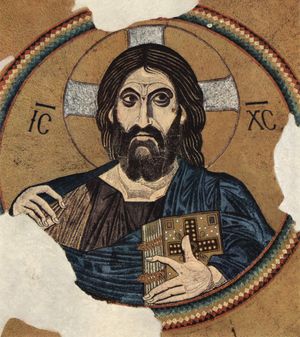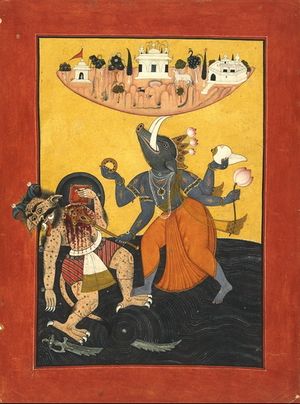التجسد
التجسد (بالإنجليزية: Incarnation) أي التحول إلى جسد فلسفة تعني حمل وولادة مخلوق (بشر عادة) كتشكل مادي لكائن غير مادي الأصل.
المسيحية

تجسد المسيح is a central Christian doctrine that God became flesh, assumed a human nature, and became a man in the form of Jesus Christ, the Son of God and the second person of the Trinity. This foundational Christian position holds that the divine nature of the Son of God was perfectly united with human nature in one divine Person, Jesus, making him both truly God and truly man. The theological term for this is hypostatic union: the Second Person of the Trinity, God the Son, became flesh when he was miraculously conceived in the womb of the Virgin Mary.[1] Biblical passages traditionally referenced in connection with the doctrine of the Incarnation include John 1:14, Colossians, and Philippians 2:7-8.
الهندوسية

في الهندوسية، التجسد عموماً يشير إلى أڤاتار ڤشنو. وجماعياً، فإن الأڤاتارات العشر لڤشنو تُعرف بإسم داشاڤاتارا.
الإسلام
انظر أيضا
- ^ "Incarnation". Encyclopedia Britannica.